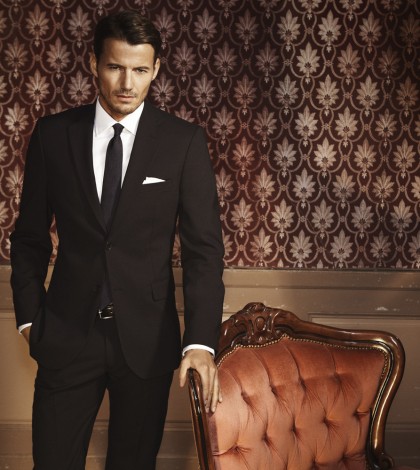There’s something missing when it comes to the way men’s fashion brands talk to the people they want to wear their clothes. Marketing for men’s fashion brands falls into one of two categories: advertising an image that is, for most men, completely unattainable; or else speaking to a fashion ‘gatekeeper’ – that is, someone like a partner, generally a woman, who steers a man’s wardrobe choices.
Sartorial choices have a far-reaching impact for wearers of either gender. The cut, cloth and colour of an outfit purchased from a retailer such as Dobell creates that first impression before a hand is extended or a greeting spoken. Yet getting to that point, for many men, is an uphill struggle – and that’s down to a gap in marketing messaging.
As style expert Constance Dunn says in an interview with FastCompany.com, “What you see a lot is there is a crisis of male identity. You see men with grey in their hair and they are still wearing Vans sneakers and long skateboarding shorts. They are keeping this identity. Couture ads are so far off the mark for most men, there is not a strong message. There is not a middle road of an attractive man wearing an ensemble that is very easy to put together and is accessible. That’s what is missing from the media messaging.”
While that is as true in some ways as it was four years ago, that hasn’t stopped the extraordinary growth of men’s fashion sales. In an article on RealBusiness.co.uk, Ratuken Marketing Europe’s Mark Haviland says that menswear sales now contribute almost £13billion to the UK economy. Why? Because leading brands such as Lyle & Scott and Burberry realised that the way they spoke to their consumers needed to change.
“Menswear brands should consider how social fits into their online marketing strategy. From our own research, we know that men like to investigate their purchases before committing to buy,” Haviland writes.
“As a result, brands should provide information on their social pages, in order to target men with relevant information on the channel that suits them. In addition, promoted tweets with strong creative on Twitter are available for all brands and can help to ensure targeted advertising is building an engaging presence on the platform.
“Consumers do not want to be targeted with irrelevant content on social channels. Brands should be ensuring they are providing relevant, engaging content which will connect consumers with their brand as they browse social channels.”
It’s no good simply projecting an aspirational image. “Wear this suit and good things will happen,” is a far less effective message than saying to men who want to add to their wardrobe: “Here’s how you can take these shoes and this jacket and make them work for you.” Backing that up with engaging editorial to add substance to whatever you’re trying to sell shows that your expertise is genuine.
Bloggers have long been courted by women’s fashion marketing, and although we’ve yet to see that really take off for men, brands are at least attempting to engage male shoppers where and when it suits those men thanks to intelligent social media and by toning down the pout-filled ads.

